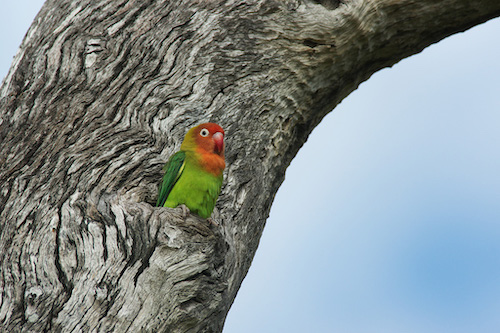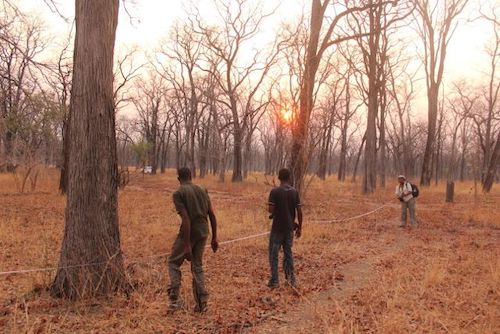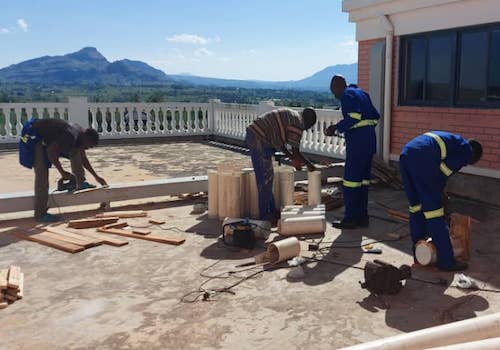A new project is exploring how artificial cavities can be used to boost breeding populations of some of Africa’s most threatened lovebirds. The project will see the installation of 60 specially constructed nest boxes within Liwonde National Park in Malawi and investigate a number of questions to understand how nest boxes can help conserve threatened lovebirds throughout the Zambezi River basin.
Previous research by the World Parrot Trust, in partnership with BirdWatch Zambia, the Museums of Malawi and the FitzPatrick Institute of African Ornithology has highlighted the critical importance of stands of “Cathedral” Mopane for Lilian’s lovebirds. “Our research revealed a strikingly strong association between the presence of mature Mopane trees and lovebirds” says Dr. Tiwonge Gawa, Lovebird Research Officer for the World Parrot Trust and lecturer at the Malawi University of Science and Technology. “Mature Mopane trees provide cavities for nesting and roosting lovebirds but these trees are targeted for charcoal production and logging meaning that the lovebirds are rapidly losing their homes”. Learn more here.


Recent range-wide surveys for Lilian’s lovebirds led by Dr. Gawa, have revealed their distribution is much smaller than previously thought and that the species is now restricted to a few relatively small fragments of woodland, highlighting the need for conservation action. Sascha Dueker, WPT’s Lovebird Conservation Coordinator explains “There is an urgent need to take steps to protect areas of remaining habitat for lovebirds in the region and develop innovative approaches to boost and restore populations. Lovebirds breed readily in nest boxes in captivity but the potential to use nest boxes in a wild setting as a conservation tool is yet to be explored. This will be an exciting world first!

The project aims to explore whether lovebirds are more likely to adopt artificial cavities closer to existing nesting areas as well as how well artificial cavities can replicate the conditions found in natural cavities. This information will inform efforts to mitigate habitat loss in key sites as well as open up exciting opportunities to restore populations of some of Africa’s most threatened lovebirds.
The project, which was delayed last year due to the global COVID-19 pandemic, brings together a number of partners in the region and builds on previous collaborative partnerships between conservation groups. Partners include African Parks, the Malawi University of Science and Technology, Malawi Department of National Parks and Wildlife, Wildife and Environmental Society of Malawi (WESM). The project is supported by WPT's "Share the love" campaign, a generous gift from Pamela Isdell, the Parrot Society UK, Gesellschaft für Tropenornithologie e. V., Swissline cosmetics, International Foundation for Science and BirdLife International/Good Gifts catalogue.
































